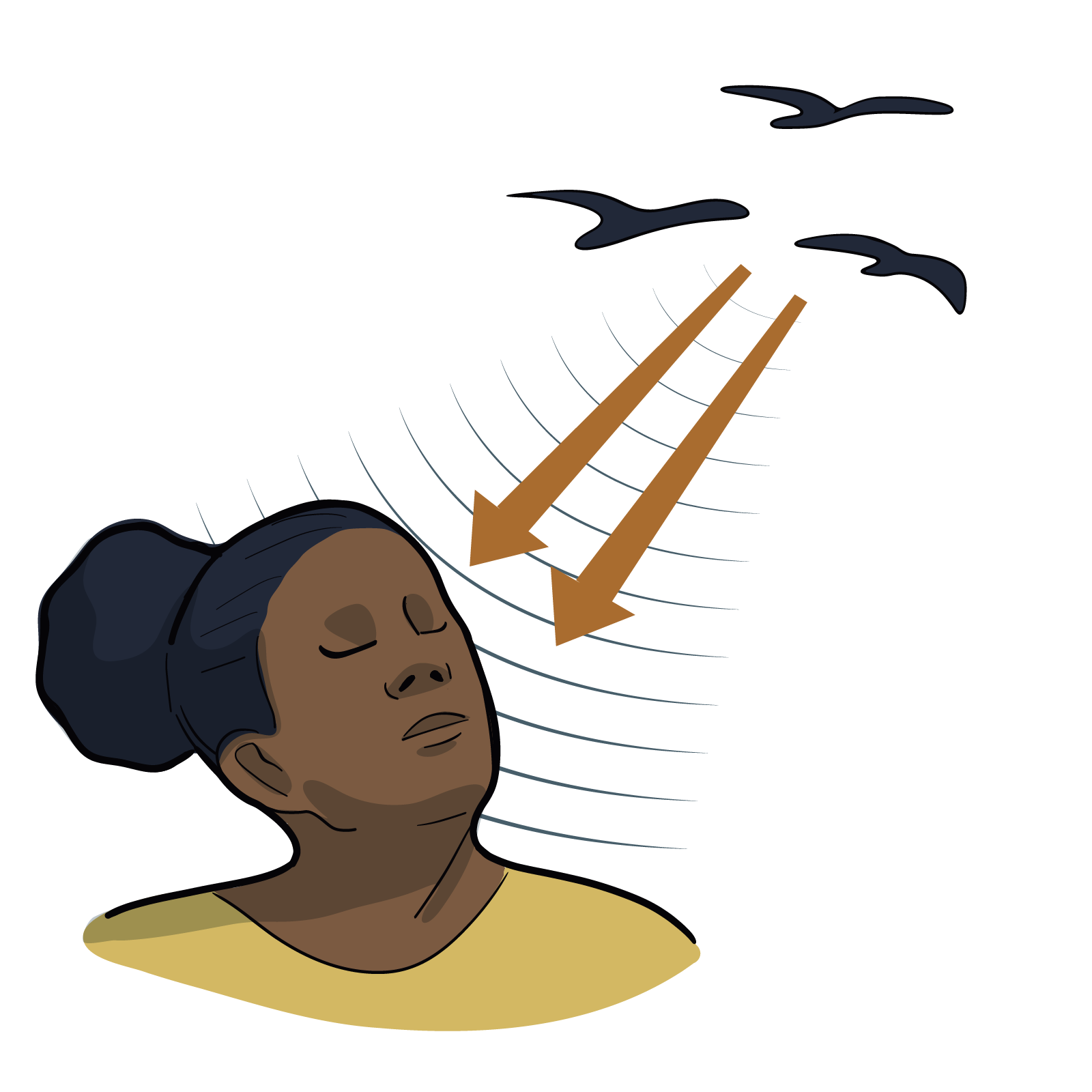Chapter 5. Sensation and Perception
SP.7: Deep Dive – Pitch Perception and Sound Localization
Approximate reading time: 10 minutes
Different frequencies of sound waves are associated with differences in our perception of the pitch of those sounds. Low-frequency sounds are lower pitched, and high-frequency sounds are higher pitched. How does the auditory system differentiate among various pitches?
Several theories have been proposed to account for pitch perception. We’ll discuss two of them here: temporal theory and place theory.
The temporal theory of pitch perception asserts that frequency is coded by the activity level of a sensory neurone. This would mean that a given hair cell would fire action potentials related to the frequency of the sound wave. Sometimes, we refer to this as phase-locking. While this is a very intuitive explanation, we detect such a broad range of frequencies (20–20,000 Hz) that the frequency of action potentials fired by hair cells cannot account for the entire range. Because of properties related to sodium channels on the neuronal membrane that are involved in action potentials, there is a point at which a cell cannot fire any faster (Shamma, 2001).
The place theory of pitch perception suggests that different portions of the basilar membrane are sensitive to sounds of different frequencies. More specifically, the base of the basilar membrane responds best to high frequencies and the tip of the basilar membrane responds best to low frequencies. Therefore, hair cells that are in the base portion would be labeled as high-pitch receptors, while those in the tip of the basilar membrane would be labeled as low-pitch receptors (Shamma, 2001). We call this place coding.
In reality, both theories explain different aspects of pitch perception. At frequencies less than 3000 Hz, it is clear that both the rate of action potentials (phase-locking) and place contribute to our perception of pitch. However, much higher frequency sounds (greater than 3000 Hz) can only be encoded using place cues (Shamma, 2001).
Watch this video: Tricky Topics: Auditory Discrimination (6 minutes)
“Tricky Topics: Auditory Discrimination” video by FirstYearPsych Dalhousie is licensed under the Standard YouTube licence.
Sound Localization
The ability to locate sound in our environments is an important part of hearing. Localising sound could be considered similar to the way that we perceive depth in our visual fields. Like the monocular and binocular cues that provided information about depth, the auditory system uses both monaural (one-eared) and binaural (two-eared) cues to localize sound.
Each pinna interacts with incoming sound waves differently, depending on the sound’s source relative to our bodies. This interaction provides a monaural cue that is helpful in locating sounds that occur above or below and in front or behind us. The sound waves received by your two ears from sounds that come from directly above, below, in front, or behind you would be identical; therefore, monaural cues are essential (Grothe, Pecka, & McAlpine, 2010).
Binaural cues, on the other hand, provide information on the location of a sound along a horizontal axis by relying on differences in patterns of vibration of the eardrum between our two ears. If a sound comes from an off-center location, it creates two types of binaural cues: interaural level differences and interaural timing differences. Interaural level difference refers to the fact that a sound coming from the right side of your body is more intense at your right ear than at your left ear because of the attenuation of the sound wave as it passes through your head. Interaural timing difference refers to the small difference in the time at which a given sound wave arrives at each ear (Figure SAP.20). Certain brain areas monitor these differences to construct the place along a horizontal axis at which a sound originates (Grothe et al., 2010).

Image Attributions
Figure SUP SP.7. Sound localization by Rachel Lu is licensed under a CC BY-NC-SA license.
To calculate this time, we used a reading speed of 150 words per minute and then added extra time to account for images and videos. This is just to give you a rough idea of the length of the chapter section. How long it will take you to engage with this chapter will vary greatly depending on all sorts of things (the complexity of the content, your ability to focus, etc).

